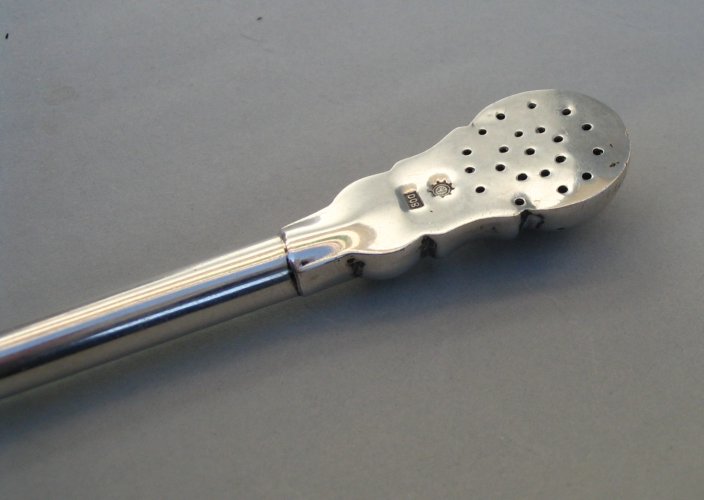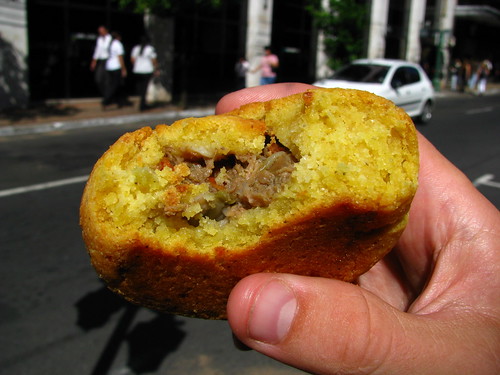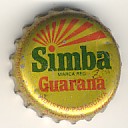It's been almost 5 months since I left Paraguay, but some things in my life are still Paraguayan. I still have mate and tereré on a regular basis, though not as often as I wish I did. Yerba is ungodly expensive here, and postage from Paraguay is a bit pricey, especially by Paraguayan standards, so I'm trying to stretch what I still have.
For those of you who didn't follow my blog while I was in Paraguay or those of you not familiar with Paraguay, tereré is a kind of tea. See the picture for a visual. It's made out of loose leaves
 (yerba) and icy water. It is drunk out of a cup made out of metal, wood, or horn called a guampa, and drunk through a metal straw called a bombilla (see picture) that has lots of tiny holes in the bottom so that you don't drink the leaves. Mate is basically the same thing, except hot water is used in place of cold water. Tereré is a social activity in Paraguay. Whenever you go to a friend's house, you can be sure that they'll offer you terere (in the warmer months) or mate (in the early morning and cold months). From the high-class Asunceños (residents of Asunción) to the campesinos (farmers) in the middle of nowhere, everyone drinks terere. On sweltering February afternoons, the best thing to do is just sit with some friends and tomar un terere.
(yerba) and icy water. It is drunk out of a cup made out of metal, wood, or horn called a guampa, and drunk through a metal straw called a bombilla (see picture) that has lots of tiny holes in the bottom so that you don't drink the leaves. Mate is basically the same thing, except hot water is used in place of cold water. Tereré is a social activity in Paraguay. Whenever you go to a friend's house, you can be sure that they'll offer you terere (in the warmer months) or mate (in the early morning and cold months). From the high-class Asunceños (residents of Asunción) to the campesinos (farmers) in the middle of nowhere, everyone drinks terere. On sweltering February afternoons, the best thing to do is just sit with some friends and tomar un terere. Besides terere on a somewhat-regular basis, I've made Paraguayan food several times. Mbejú is a favorite, and I attempted chipa once. One Sunday a few weeks ago, my Japanese AFS sister, the inbound from Paraguay, and I had a cooking day, and we made mbeju, mandi'o chyryry, mandioca frita, empanadas, and pizza de palmito y huevo. Mbejú is a traditional food made out of cheese, tapioca flour, corn flour, milk, and salt that looks something like a pale-yellow-ish white pancake. Mandi'o chyryry is a dish made with boiled cassava/yucca/mandioca, eggs, and cheese. Mandioca frita is simply fried cassava. Empanadas are basically amazing. They're little fried, folded-over pockets filled with some combination of eggs, vegetables, spices, beef, chicken, cheese, mandioca, peppers, corn, or anything else you could want. Most of these were successfully made, but the mbeju was a little crumbly.
All these crazy words like "mandi'o chyryry" and "mbejú" are Guaraní, if you were wondering. Guarani is an Amerindian language spoken in central South America, that happens to be one of the two official languages of Paraguay (the other being Spanish, of course). I put a handy little phrase list and pronunciation guide on the right hand side of this blog, but if you're looking to (for whatever crazy reason) learn more than a few phrases, I highly recommend that you head on over here. "Here" is a blog/podcast designed to teach/help English-speakers learn Guaraní. It's created by a Peace Corps volunteer who's currently in Yataity, Guaira, Paraguay. I've been using it to learn more advanced Guarani, to add to my lovely bank of insults/swear words that my compañeros so excitedly taught me (Apparently teaching the rubia to yell "Japiro! Ñama kota!" is hilarious...who knew?). Ok, maybe I learned more than that, but in all honesty, I'm still a ways away from proficiency with Guarani Guarani as opposed to Jopará, which is Guarani mixed with Spanish.
Nearly 5 months later, and sigo llevando mucho de Paraguay en mi corazón. I'm still perpetually late, though I at least try now. I don't stress about the little things, and I still think our houses are huge, are roads are amazingly smooth, and everything is expensive. School is still dull, and I still think that people have no balance in their lives. It's all school-work-money or all party-drinking-puking with very little middle ground. The empanada/Ades/alfajór/guaraná cravings still come every now and then. Pepsi is too sweet after a semester of nothing but Coke. My brain still switches to Spanish on a fairly regular basis, and a decent-sized chunk of my iTunes library is devoted to Reggaeton, Cumbia, and Bachata.
I see that this blog is still being read quite often, and I assume that at least some readers are perspective exchange students to Paraguay. If anyone is considering going to Paraguay, feel free to leave your email address in a comment, and I can hopefully answer some of your questions. About a year ago, I was trying to research Paraguay and came up with football/soccer scores, colonial maps, and info on the Chaco, Yguazú falls, and the Itaipú dam. I know that there is basically no information out there about Paraguayan school, food, transportation, or really anything else you really want to know.










